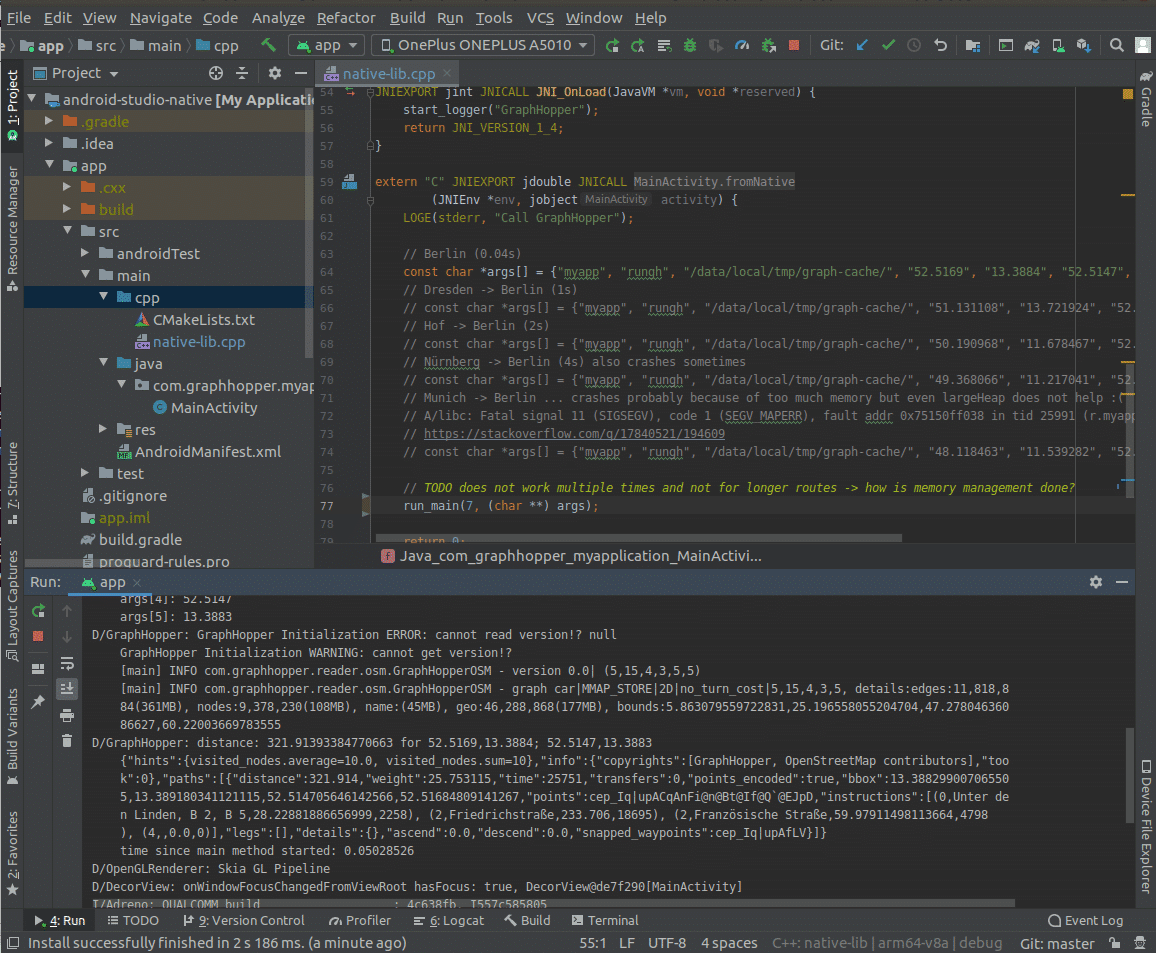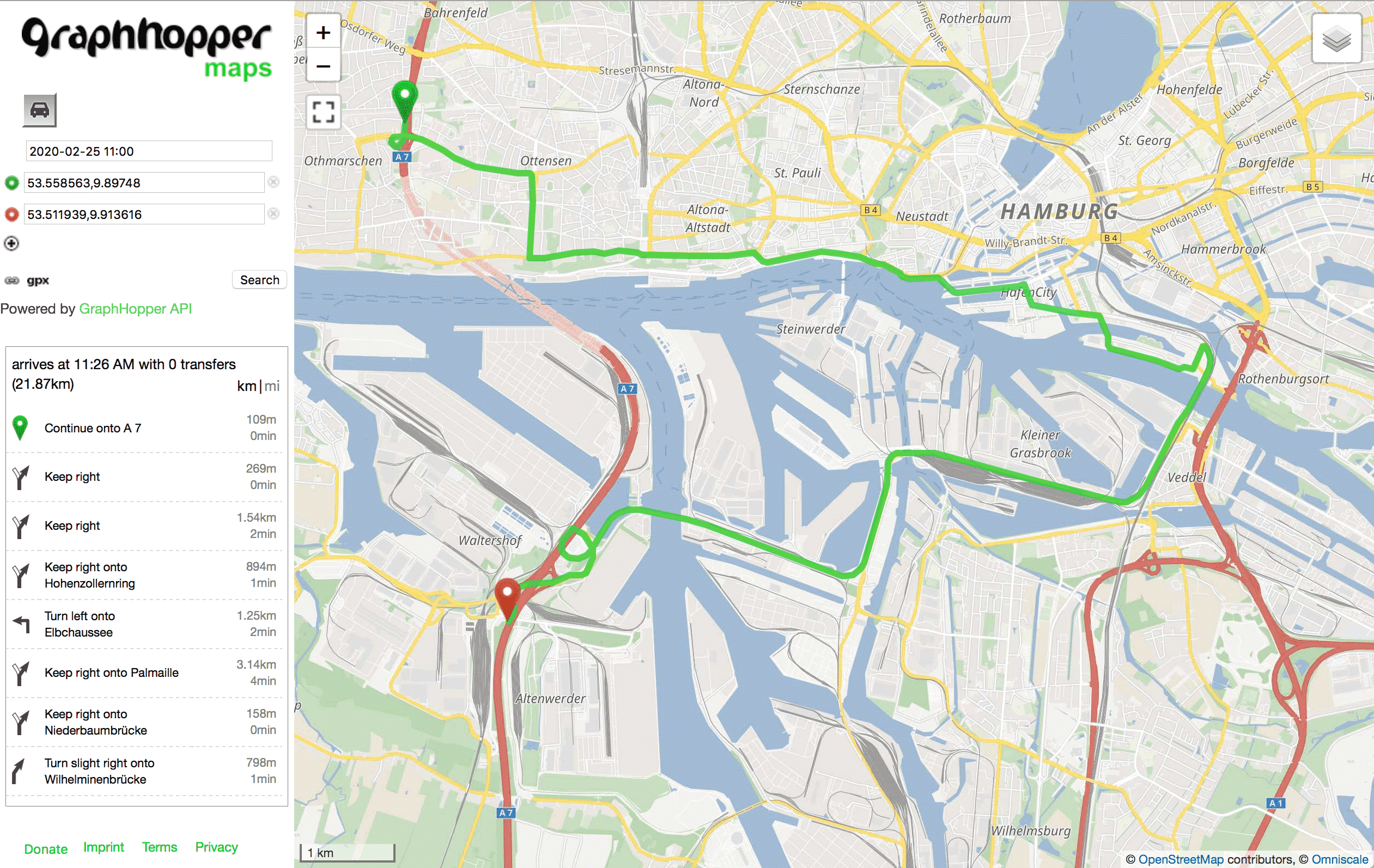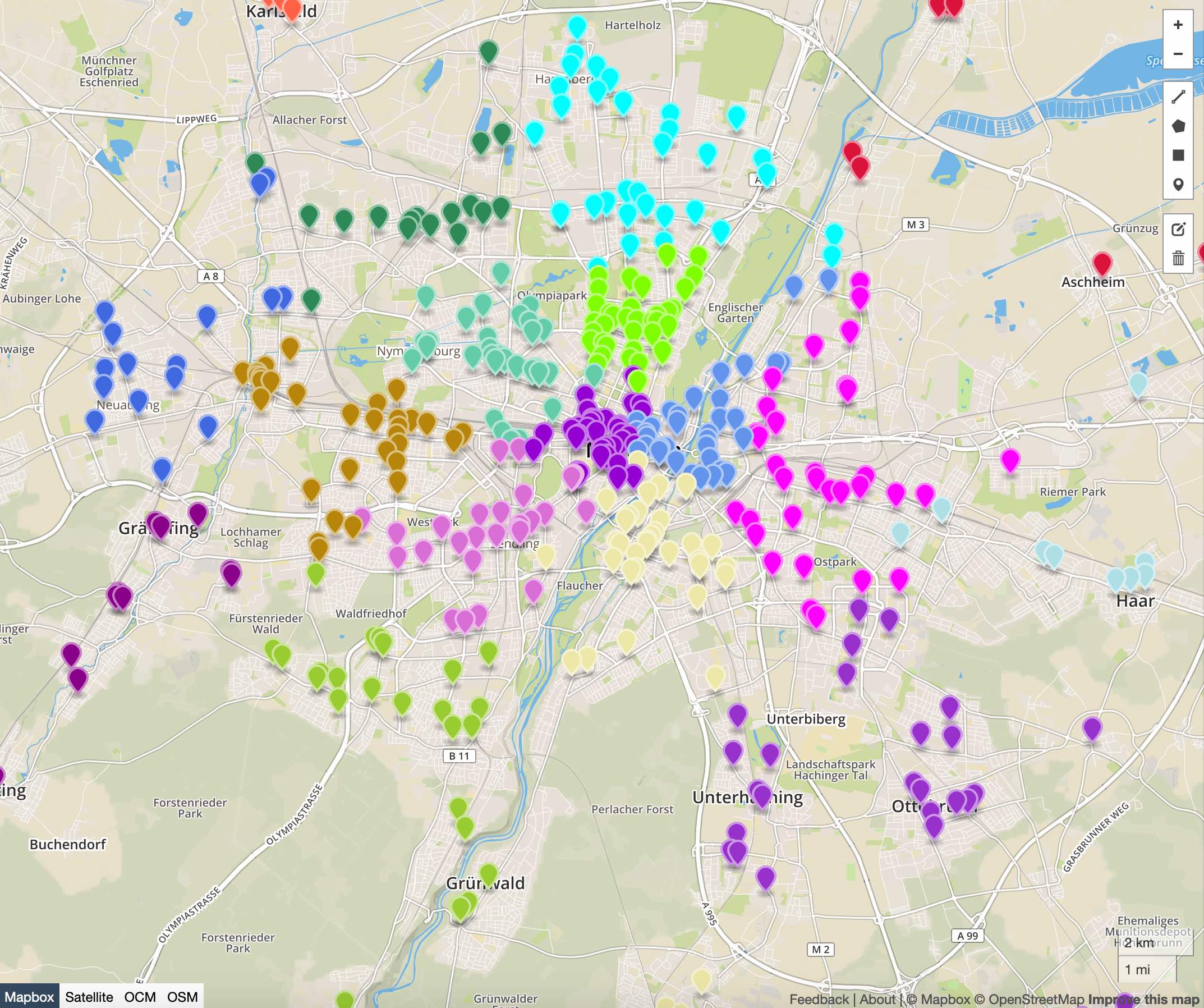Don’t hesitate to contact us:
Forum: discuss.graphhopper.com
Email: support@graphhopper.com

The previous blog post was about the “normal way” of using GraalVM native images. In this blog post I use it to run Java code on Android without the usual limitations of “Android Java”. I.e. the Java code can be JDK 11 and include arbitrary libraries which is usually not possible when using Dalvik or […]
This blog post is about the experience I made when compiling the GraphHopper routing engine to a native executable using GraalVM. The GraphHopper routing engine is an open source project that uses the road network from OpenStreetMap and is able to calculate routes from A to B very fast and offers other features like isochrone […]

Today the GraphHopper routing engine turned 8 years. It has now over 2500 stars at GitHub and together we pushed over 4300 commits with contributions from over 80 contributors – thanks a lot! See here for the first commits and read the blog post about the new release 1.0. Additionally we invested into our other […]

Over the past year, we’ve been investigating time-dependent routing, in particular time-dependent access restrictions and time-dependent turn restrictions. We’ve been working with the University of Heidelberg, and the work has been supported by a grant from the Federal Ministry of Transport and Digital Infrastructure. The recommended route from the northern part of the city of […]
Ending support for TLS 1.0/1.1 From March 4th, 2020, all requests to the GraphHopper Directions API must use HTTP over TLS (HTTPS), with support for TLS 1.2. We’ve decided to make this change in the best interest of our customers. This way we can ensure the security of data in transit and stay up to […]

We’re happy to announce our new product: the Cluster API! It solves the “capacity clustering problem” by assigning a set of customers to a given number of distinct groups (called clusters). The API “clusters” by minimizing the total distance from each individual customer to its designated group median. It can also consider minimum and maximum […]